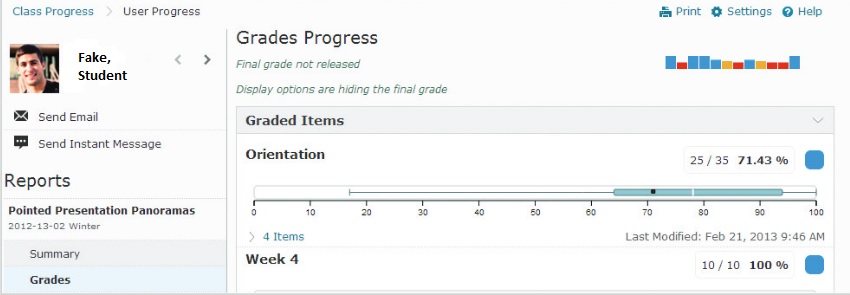This week our guest faculty blogger is Dr. Silvia Sabater-Rodriquez from the Hispanic Studies Department. Dr. Sabter-Rodriquez attended the FTI in May 2013. I sat down with her to talk about what tools she learned about in the FTI that she is using and hear is what she told me:
Goodnote=For teaching. Before would grade papers by hand but now uses Goodnotes and using a stylus makes commenting easy. Uses the different pen colors to denote different issues in the paper like blue for grammar, green for vocabulary. Do not have to carry all those papers and students do not have to print. Allows for quick turn around time, don’t loose a copy and easy to resend. Goodnotes keeps papers very organized and can work anywhere even without wifi as long as the papers were downloaded first. No more clutter of papers at home! Also personal uses: download large files like conference schedule and can write and highlight on the schooled which are of interest. Can copy and paste words from program into Notes talking for the session.
Evernote= For personal organization of notes, ideas, information from conference, ideas from readings, sabbatical proposal. Great way to organize, easy to search and can take a picture of any handwritten notes as well as handwritten notes with the app Penulitmate. Did use for a candidate visit to take notes during the interviews and presentation which was less conspicuous than a laptop. Also used for department meeting notes and took pictures of hand outs.
Dropbox= Had an account prior to the FTI but did not see the possibilities until the FTI . With the new ipad plus computer it is a useful tool that she can have access to anytime anywhere. Uses it to share documents instead of emailing back and forth.
If you would like to know more about these apps, please contact your instructional technologist .










